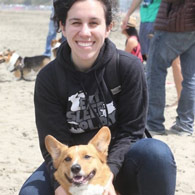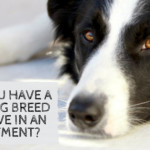5 Signs of Hip Dysplasia
Signs of hip dysplasia can be subtle. However, hip dysplasia is an affliction, which can affect several herding breeds. That’s why, as pet parents, we need to be aware of changes in our dog’s behavior in order to help them when they are struggling with these types of diseases.
Therefore, today I would like to discuss 5 Signs of Hip Dysplasia.
1) Your Dog Seems Stiff After Getting Up
Occasionally, we sit in an uncomfortable position, and when we finally decide to stand up, we are stiff. Dogs can suffer from the same circumstances. However, if you notice that your dog is consistently stiff when they stand up, this may be cause for concern. Additionally, you may notice that your dog has started to struggle while navigating the stairs, this too may be a sign of stiffness.
2) Unusual Gait
Gait is the term used to describe the way in which a dog walks. Your veterinarian may have asked to see your dog walk outside during their physical exam. During those walks, your veterinarian is checking your dog’s gait for a number of irregularities. If your dog has an irregular gait, which could include wobbling or waddling, your dog may be displaying early signs of hip dysplasia. You may even notice that your dog is “bunny hopping” when they run. A dog holding their back legs together while running is another sign of discomfort in their hips.
3) Aversion to Exercise
Have you noticed that your previously spunky dog has suddenly started to slow down? Not wanting to participate in strenuous exercise is another sign of hip dysplasia. If you think about it, most dogs want to exercise and play. When a dog doesn’t want to participate in fun activities, I can’t help but be suspicious. Alternatively, you may notice that your dog is still willing to exercise, but is particularly stiff and in pain after the exercise.
4) Clicking Noises While Running or Walking
Occasionally, if the condition is bad enough, you can hear clicking sounds as your dog is walking or running. Once again, this is not unlike humans who often can hear the issues they are having in their joints.
5) Change in Behavior During Nail Trims
This is a sign I noticed from personal experience. While working at a veterinary hospital, we did a lot of nail trims for our patients. While trimming nails, it became apparent if a dog was having some uncomfortable pain in their hips. For example, most dogs are held for nail trims in one of two ways. One way is to lay the dog down on their side, and hold their feet for the nail trim. On occasion, a dog would lose tolerance for lying down on their side with their back feet held together. Most likely this was because it wasn’t comfortable for their hips anymore.
A dog can also have their nails cut “horse style”, which is where they stand up and a technician supports them under their chest while another technician cuts their nails. During this time, the technicians might notice some abnormal wobbliness or signs of pain.
The best thing you can do for your dog is try to image from your perspective what might be painful or uncomfortable if your hips hurt. If you feel that your dog might be displaying some signs of hip dysplasia, please reach out to your veterinarian immediately.
Additional Resource:
http://pets.webmd.com/dogs/canine-hip-dysplasia
Article By:
Rachel Sheppard







